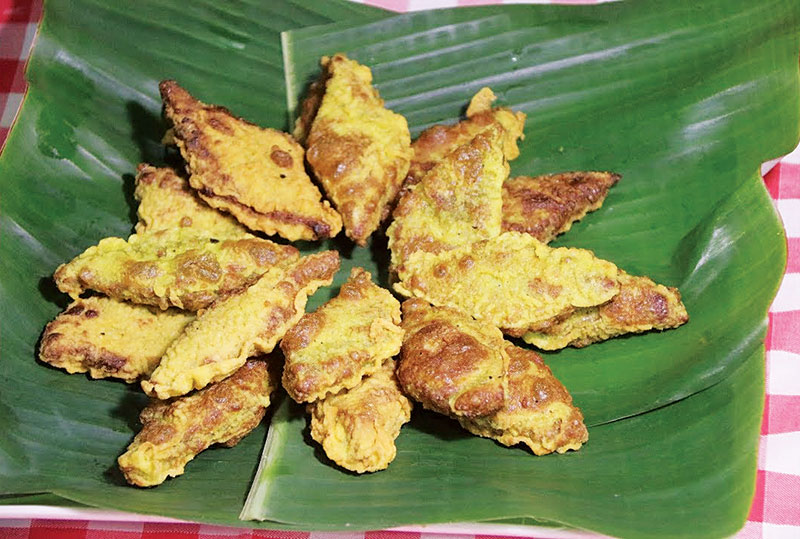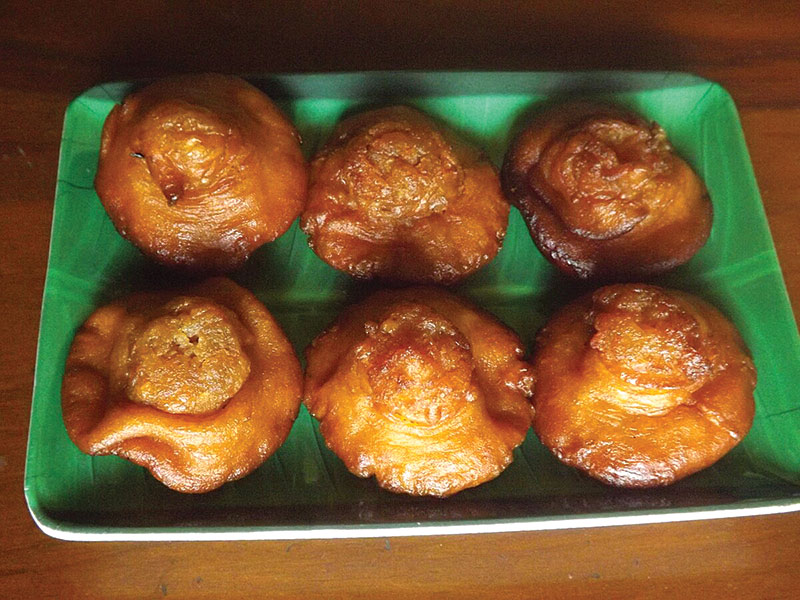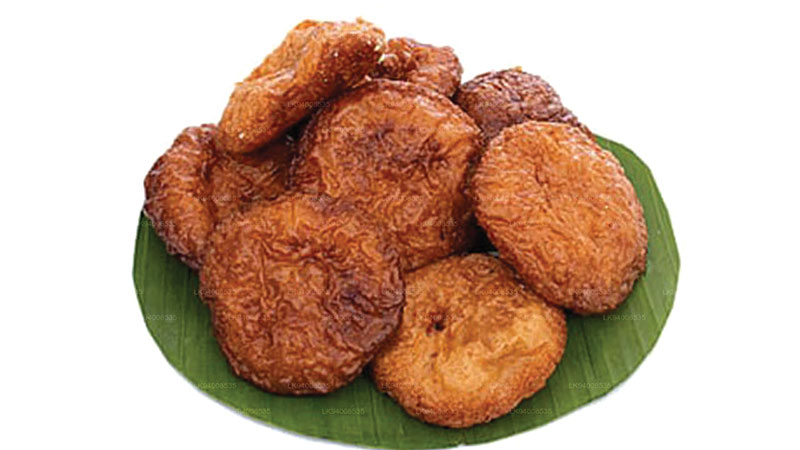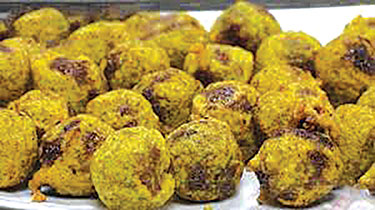Life style
Going vegetarian may lower risk of UTIs in women

A vegetarian diet may lower your risk for urinary tract infections (UTIs), according to a study published in Scientific Reports. Researchers tracked UTI incidence rates for 9,724 vegetarian and nonvegetarian participants. Results showed a 16 percent decreased risk for UTIs among those following a vegetarian diet. Vegetarians, of course, do not consume poultry or pork, allowing them to avoid a strain of E. coli bacteria normally associated with UTIs. They also consume more fibre from plant-based foods that better regulate gut bacteria.
 Giving up meat could reduce levels of certain E coli bacteria strains in bowel, say scientists.
Giving up meat could reduce levels of certain E coli bacteria strains in bowel, say scientists.
Ditching meat may reduce the risk of urinary tract infections, at least in women, research suggests.
Urinary tract infections, or UTIs, are common and painful, with more than 150m cases around the world every year.
Infections in otherwise healthy individuals are generally caused by certain strains of E coli bacteria that can cause problems outside of the gut. These typically live in the bowel, and sometimes the vagina, but can end up entering the urethra, resulting in an infection there or further up the urinary tract, in the bladder.
Women are particularly affected by UTIs, such as cystitis, because the distance from the anus to the urethra and the length of the urethra itself are both shorter. The urethra is also close to the vagina, meaning bacteria can be easily transferred during sex.
While UTIs can be treated with antibiotics, there has been a rise in persistent infections, a trend potentially driven by an increase in antibiotic resistance and greater concerns about prescribing antibiotics in the first place.
Now a study involving Buddhists in Taiwan has revealed that those who follow a vegetarian diet have a lower risk of developing a UTI than those who eat meat.
Everything you ever wanted to know about urinary tract infections
The team behind the study say that may be because meat, particularly pork and poultry, is known to contain the strains of E coli bacteria that cause many UTIs. By ditching a meat-eating diet, the theory goes, people decrease their exposure to these bacteria, reducing levels in the bowel and hence lowering the risk they will end up in the urethra.
But there may be another effect.
“Vegetarian diets [lead to] lower stool pH than for non-vegetarians, and the lower stool pH could prevent the growth of E coli,” said Dr Chin-Lon Lin, co-author of the research from Tzu Chi University in Taiwan.
However, others warned that the study did not look at the impact of switching diet, noting that the problematic E coli might linger among internal microbial communities in former meat-eaters.
“We simply don’t know if an established reservoir [of these bacteria] in one’s gut microbiota could be easily ousted by a diet change – though it would make an interesting future study,” said Dr Jennifer Rohn, the head of the centre for urological biology at University College London.
UTI test often fails to detect infection, say researchers
Overall the team say a vegetarian diet was linked to a 16% lower risk of developing a UTI, compared with meat eating, after taking into account potentially influencing factors such as age, sex, lifestyle and other health conditions, including those that may predispose a participant to UTIs.
However, further analysis revealed the reduced risk of UTIs among vegetarians was only clear in women, non-smoking participants and “uncomplicated UTIs” – those that crop up in otherwise healthy people.
The team say the latter was not surprising, as E coli is only thought to cause about 50% of “complicated” UTIs – those involving a predisposition to an infection, such as urinary tract stones, having a catheter, or renal failure.
However, the study only questioned participants at one point in time and relied on self-report.
Dr Jim Johnson, an expert in an infectious diseases at the University of Minnesota, pointed out that the study did not take into account family history of UTIs, the frequency with which participants had sex or the method of contraception – all of which can affect UTI risk. He added that vegetarians might be less likely to seek help for a UTI or might choose “alternative” remedies.
He also stressed the difference shown in the study was modest, equating to about three fewer infections per 10,000 people .
The Scientist
Life style
Kevum – Befitting a King
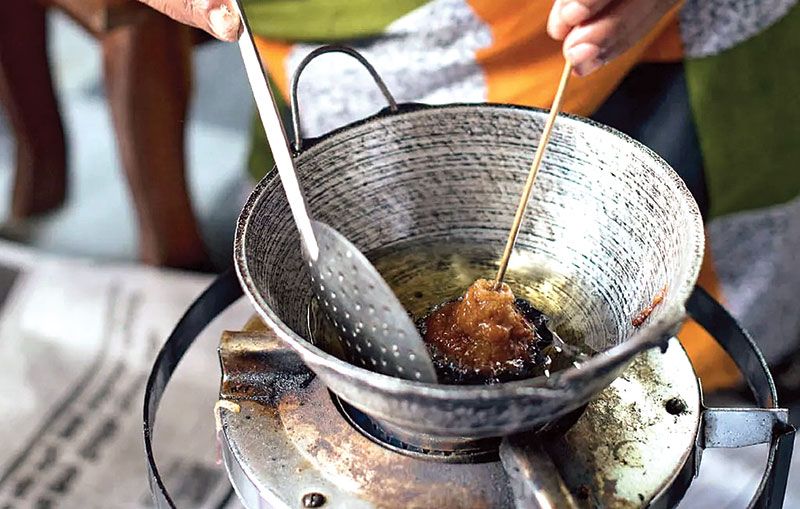
The avurudu table of any Lankan home is complete only when it is laden with kevum. Dating back to ancient times, many types of kevum are chronicled even in our classical texts. The Dutch rulers of the island are said to have relished them, some even asking if they grew on trees… A delicacy which was offered to visiting dignitaries, kevum was revered by our kings even in the battle field not only as an energy-booster but also as a wound disinfectant.
BY RANDIMA ATTYGALLE
The culmination of Avurudu preparations in my childhood with my grandparents was marked by the ritual of Kevum-making. Athamma would ‘book in advance’ the kevum specialist Soida Hami (Soida aachchi to us children), and install a special hearth in her back verendah for the grand moment. I would watch Soida aachchi in wonderment as her thick batter of rice flour and best of kithul treacle shaping into kevums in a hot wok of coconut oil. The long kevum koora in her nimble fingers would achieve the feat of the perfect konde. It was almost a rite of reverence, so much so I was not supposed to talk to her until the first batch of Konda-kevums was completed. Like many old-folk of her vintage, Soida aachchi believed that talking while the first few kevums are done would result in a flawed product.
She would then place each perfect Konda kevuma on a banana leaf for the excess oil to drain. Once the whole exercise was completed, she would place Konda-kevum in large earthen pots and store them in the dum messa or the storage area above the main hearth of the kitchen. She would spare me only one kevuma and the rest had to wait until the auspicious time on avurudu day!
Travellers’ records
Robert Knox an English sailor who was held in captive in the court of the Kandyan King Rajasinghe II and one of the prolific chroniclers of ancient Ceylon in his famous work, An Historical relation of the Island Ceylon documents on the sweet meats of Lankans with a special account of kevum.
‘They have several sorts of sweet-meats. One they call Caown. It is like to a fritter made of Rice-flower and Jaggory. They make them up in little lumps and lay them upon a leaf, and then press them with their thumbs and put them into a frying-pan and fry them in Coker-nut Oyl or Butter. When the Dutch came first to Columba, the King ordered these Caown to be made and sent to them as a royal treat. And they say, the Dutch did so admire them, that they asked if they grew not upon trees, supposing it past the Art of man to make such dainties.’ (Spelling as in the original Knox)
The account of Knox enables rich insights into this wonder of a sweet meat which enthralled many a traveller to the island including dignitaries. The European trader Cosmas who visited Ceylon in 545-550 AD, documents that along with gems, Kevum and Kalu dodol from Ceylon were taken to the Roman court of Emperor Claudius during the sixth century.
- Mun kevum
- Konda kevum
- Athirasa
Classical literature
Kevum dates back to ancient times and our classical texts such as the Ummagga jatakaya, Pujawaliya and Saddharma Ratanawaliya bear evidence to this fact. “Originally known as poopa this sweet meat came to be known as kevum in the Dambadeniya-Kurunegala era. Jathaka atuwa getapadaya mentions 18 kinds of sweet-meats found in the ancient Sri Lanka and among them are several types of kevum such as sendi kevum, mal kevum, athirasa, pena kevum, raa-kevum,” says Prof. Kusumalatha Lankamulla from the Department of Sinhala and Mass Communication at the University of Sri Jayewardenepura.
This scholar with research interest in Culture, Traditional and Modern Literature goes onto note that Mahawamsa in its 32nd chapter refers to two types of kevum in the context of alms offered by King Dutugemunu. The two types- thel kevum and maha de kuvum mentioned, were fried in ghee. “Many of our classical texts mention kevum in multiple festive contexts beyond avurudu. In Ummagga jathakaya, kevum is mentioned as a fitting gift to be taken when visiting parents. Saddharma Ratanawaliya refers to boxes of kevum or kevum pesa.“
An energy booster
Among the popular kevum types found today are Konda kevum, athirasa, mun-kevum, naran kevum and hendi-kevum. Although the ingredients used for each type may slightly differ, rice flour and treacle (now largely replaced with sugar) remain common to all. The much sought after Konda kevum which is relatively a later addition to the range of kevum found here at home is believed to have originated during the Kandyan period says Prof. Lankamulla. “During the Kandyan period, men were prohibited from cutting their hair off and they had to tie it in form of a knot on top of their heads. Konda kevuma is believed to have been inspired by this practice.”
Traditionally, Sinhalese soldiers were given a bag of kevum when going to war. History has it that King Dutugemunu went a step ahead and used kevum to treat wounded soldiers. His army used to prepare kevum months in advance and keep them exposed to air so that the mould can grow on them.
This mould in today’s language had ‘antibiotic properties’ and was used on the wounds of the soldiers to prevent them from festering. “In a bid to undermine the pride of place given to kevum as a super food by the locals, the British coined the famous derogatory adage: ‘Sinhalaya is a fool but is an ace at eating kevum’. (Sinhalaya modaya-kevum kanna yodaya)
Steeped in tradition
Superstitious beliefs surrounding the process of kevum-making are not uncommon and these vary from region to region in the island, says Prof. Lankamulla. Regardless of the region, several common traditions were followed by our ancestors and these still continue to be observed in several parts of the country, she says. “The frying pan with coconut oil to prepare the kevum was kept on fire at an auspicious time and village matriarchs who were highly skilled were mobilized for the occasion. Women also believed that they must refrain from talking when the first kevum is being made. For centuries, the first kevum was considered to be the ‘konduru kevum’, dedicated to the sledge-fly or the konduruwa. The village women would hang the first kevum up for the insects so that the rest would be unspoilt.”
With the passage of time, many Lankans, particularly city-dwellers depend on commercially available avurudu kevili including kevum. Although kevum is synonymous with avurudu, today people get to enjoy it round the year thanks to many sweet meat kiosks found in cities. Although these outlets have best sales during avurudu, they get plenty of orders from Lankans travelling abroad or coming home for vacation at other times of the year as well.
One such die-hard kevum fan is Uthpala Ranatunga from Ottawa, Canada. “My Loku amma (oldest aunt) makes it a point to pack me a parcel of best quality Konda kevum to take with me whenever I’m in Sri Lanka for a vacation.
I deep-freeze them for longer use and eat them sparingly,” says Uthpala to whom kevum is always a strong reminder of home. “Each time I indulge in them I feel nostalgic and miss home.”
Kevum is an integral part of the Lankan culture, finding its way from ancient classical literature to that of the contemporary including children’s literature and arts. The much-loved sweet meat is celebrated in the work of Sybil Wettasinghe – the iconic story teller and illustrator.
Come avurudu, we often hear the intonation of Lionel Ranwala, the eminent musician, vocalist and an authority on Sri Lankan folk music, whose tribute to the enduring legacy of this delicacy is one of the best in our times:
Me avurudu kale -sinaha weyan rale
Thel ihirunu kewum gediya wage…
Fashion
Festive glamour at Nethara

Nethara Collection ,is a world of export quality garments in Diulpitiya, Boralesgamuwa, is infused with an ultra festive spirit this season catering to the women of today. Unbelievable offers and discounts from Nethara for Sinhala anTamil new year. On selection of women’s clothing, ranges from casual options to formal occasion wear,all at friendly prices,to enhance your wardrobe this festive season.
Nethara collection, started small in 2017, but soon it outgrew, today with an ever increasing customer base, branded and non branded clothing this shopping centre has become very popular. Export quality , stylish dresses, crop tops, fancy blouses, trousers and many more to flaunt yourself and enhance your wardrobe.Their extensive collection, maintain low pricing allowing everybody to have a chance to shop till they drop dead. From casual wear to formal wear,they have women to men’s items like tee shirts, shirts for every occasion.
Nethara clothing has long remained a name that has struck a chord with Sri Lankan shoppers. “We believe our success has been based up on the premise that absolute sincerity towards customers and no matter what the economic situation that prevails, we try our level best to keep our prices low and within everybody’s budget, said managing director, Nethara Collection Sampath Kumara.
This April season Nethara collection brings an all new collection of export quality seasonal wear. Celebrate the season with exclusive offers made just for you! Dresses, blouses, casual, formal wear denim, men’s shirts and many more… world of limitless style and joy!
This festive season Nethara unwraps a celebration of warmth, style and sophistication. Immense yourself in a vibrant festive atmosphere as you explore thier collection under one roof 345 Boralasgamuwa With a focus on quality, affordability and customer satisfaction, Nethara export quality boutique invites you to celebrate the Sinhala and Tamil New Year in style.
(Zanita)
Life style
Sri Lanka tourism unveils strategic vision

Sri Lanka Tourism Bureau hosted a landmark event at cinnamon Life for an ambitious campaign to spotlight Sri Lanka as a top travel destination. This initiative hosted international influencers and local media to capture the unique charm of Sri Lanka’s destinations. These travel influencers will share thier real time content across platforms like Instragrams Tik Tok and youtube amplifying Sr Lanka as a must visit destination. Many media personal, bloggers and influencers participated in this event which will take them on a tourism travel featuring some of Sri Lanka’s top destination.
Sri Lanka Tourism Promotion Bureau (SLTPB) hosted a landmark event at the Cinnamon Life Hotel, Colombo. The event was led by . Deputy Minister of Tourism, Prof. Ruwan Ranasinghe, with the participation of SLTPB Chairman Buddika Hewawasam, officials, travel influencers and their families, as well as journalists specializing in tourism sector reporting. The gathering set the stage for transformative initiatives aimed at bolstering Sri Lanka’s tourism sector and redefining its global image.
In his opening remarks, Buddika Hewawasam underscored the challenges facing the tourism sector, particularly the seasonal dip in arrivals during the summer months. “The next few years will be the most challenging period for all of us,” Hewawasam stated, emphasizing the need for international collaboration and strategic development. He further highlighted the critical role played by international travel influencers and media professionals in raising awareness of Sri Lanka’s hospitality and inspiring tourists worldwide to visit.
- Dileep Mudadeniya
- Deputy Minister of TourismProfess or Dr Ruwan Ranasinghe
- Guests
The Deputy Minister of Tourism, Prof. Ruwan Ranasinghe, detailed the innovative nature of the campaign and its importance in showcasing Sri Lanka’s rich heritage, natural beauty, and diverse travel experiences to mainstream and emerging tourism markets.
During the event, several prominent travel influencers shared their thoughts about Sri Lanka’s uniqueness as a destination. They highlighted that Sri Lanka is a country where travellers don’t need to worry about finding incredible experiences—nature has already done the hard work. The influencers remarked on Sri Lanka’s unparalleled diversity, noting that it is possible to experience a range of climates within just a few hours by travelling to different parts of the island. From sun-soaked beaches to misty highlands, and from lush forests to cultural treasures, Sri Lanka offers a world of adventures in a compact and accessible setting.
In comparison to destinations like Bali, which some influencers noted as overcrowded, Sri Lanka stands out with stable and balanced tourism activities. The event attendees were thrilled by the country’s warm hospitality, authentic DDirector cuisine with an impressive variety, long history, and rich culture. These qualities make Sri Lanka not only inviting but genuinely unforgettable for visitors.
The travel influencers in attendance expressed strong confidence in their ability to share this powerful message with the world. They were determined to shape international travel trends by showcasing Sri Lanka’s unique appeal, while also helping to attract new types of guests. The influencers represented a diverse range of travel segments, including family travellers, solo female travellers, honeymooners, and adventure seekers. Their efforts were supported by Sri Lanka Tourism officials and journalists representing both local and international media agencies.
The ‘Sri Lanka, A Story for Every Season’ campaign represents SLTPB’s first large-scale effort to boost summer travel through digital storytelling and influencer collaboration.
Featuring a curated destination familiarization tour, the campaign will spotlight wildlife safaris, cultural heritage, spiritual pilgrimage sites, scenic landscapes, and adventure tourism. Influencers will produce high-impact content for platforms like Instagram, YouTube, and Facebook, reaching over 2.2 million travel enthusiasts globally.
Sri Lanka Tourism shared impressive winter peak season results, with international arrivals reaching 665,295 by March 23, 2025—a marked increase compared to the previous year. These figures illustrate the sector’s potential for growth, and the campaign aims to sustain momentum throughout the summer months.
The event was a call to action for stakeholders to unite in elevating Sri Lanka’s global tourism appeal. With plans to generate over LKR 32 million worth of media coverage and connect with diverse travel segments, the campaign underscores Sri Lanka’s commitment to redefining itself as a leading destination for year-round travel.
By Zanita Careem
Pix by Darmasena Welipitiya
-

 Business5 days ago
Business5 days agoColombo Coffee wins coveted management awards
-

 Business7 days ago
Business7 days agoDaraz Sri Lanka ushers in the New Year with 4.4 Avurudu Wasi Pro Max – Sri Lanka’s biggest online Avurudu sale
-

 Features6 days ago
Features6 days agoStarlink in the Global South
-

 Business7 days ago
Business7 days agoNew SL Sovereign Bonds win foreign investor confidence
-

 Features3 days ago
Features3 days agoSri Lanka’s Foreign Policy amid Geopolitical Transformations: 1990-2024 – Part III
-

 Features6 days ago
Features6 days agoModi’s Sri Lanka Sojourn
-

 Midweek Review3 days ago
Midweek Review3 days agoInequality is killing the Middle Class
-

 Features5 days ago
Features5 days agoSri Lanka’s Foreign Policy amid Geopolitical Transformations: 1990-2024 – Part I


